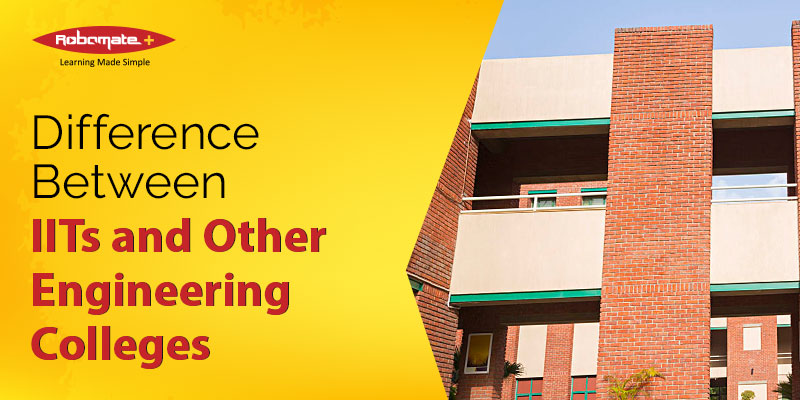Introduction
Though there are numerous institutions all across India which provide engineering degree, the IIT tag is quite reputed as the highest standard of education in India for engineering. IIT is a group of engineering institutes, 23 in number, as of 2018, created under the Institutes of Technology Act, 1961 and centrally funded.
In this article, we shall elaborate on some key differences between IITs and other engineering colleges.
Differences between IITs and Other Engineering Colleges
- Resources
When we say resources, we are primarily talking about the funds that the institute amasses. Indian Institute of Technology has been known to have an annual budget that ranges from 70 to 100 Crore. These funds are not considering the individual grants that the institute brings in.
A handful of other institutes can match this number, and most engineering colleges function at about half this number.
- Network
The IITs have 23 colleges under their umbrella, spread all across this country. They all function individually and have their own governing bodies. However, they have a network among themselves through which information and resources keep flowing between different institutes. There are organisations that have also created a network of two or more institutes like the IIIT institutes, but not at a scale that IIT has been able to achieve.
The hasty expansion has however been criticised as it has resulted in a major difference in the calibre of the students accepted, and in turn, there is a difference in the quality of engineers produced. It has also resulted in a faculty shortage and a lack of a collective vision for all the 23 IITs.
- Entrance Examination and Counselling
To join a reputed engineering college in India, the exam to be given is Joint Entrance Examination (JEE) which is conducted by the Central Board of Secondary Education (CBSE) around the month of April. After JEE Mains, which is the first paper, the top tier scorers get to write the JEE Advanced paper in order to apply for any one of the 23 IIT’s.
The branch they get offered is solely based on their rank even if the person has no particular affinity towards the subject. This is a stark contrast to the counselling procedure of foreign universities where they actually look at the qualities of the individual and then, decide on a field which they would excel and most importantly, are interested in.
Other colleges in India either get their students from similar competitive exams but at a lower difficulty level, like JEE Mains, or they conduct their own examinations like VIT, Manipal or BITS.
- Placements
IIT has had a very impressive record of placements. Only a few private universities like BITs and government universities like IIITs are at par with IITs with respect to the number of companies coming in and the placement ratio of students. Many reputed companies prefer the IIT tag over as they are known for producing quality students.
- Faculty
The IITs are known to selectively recruit experts in their various fields. The teachers that are selected are seasoned professionals who are known for their extensive research work as well as practical knowledge and have published papers in scientific journals. Most other institutes hire teachers with little experience in the field, and many are known to hire their own students after a few months of passing out.
However, on the flipside, the IIT’s have a collective faculty shortage of about 34%. This is not only restricted to the newer IIT’s but also the older ones like Kharagpur and Kanpur. Compared to other engineering colleges, this is quite high.








